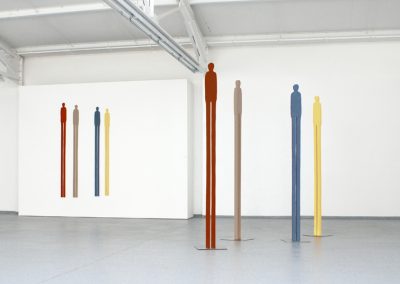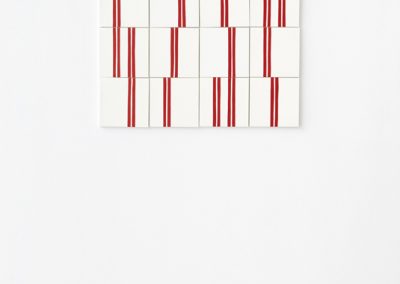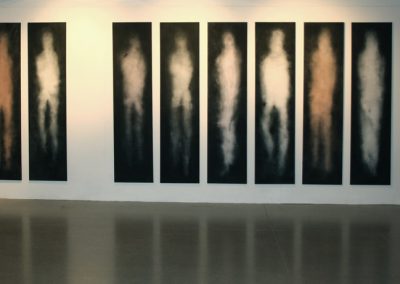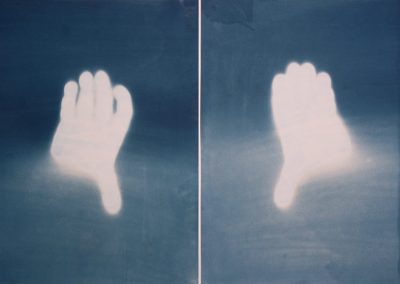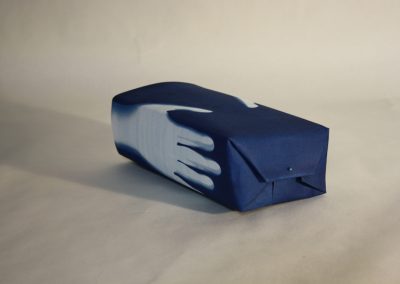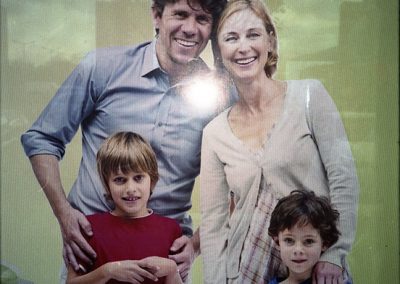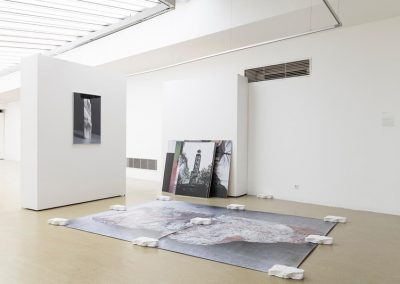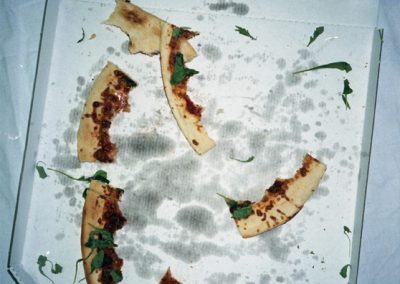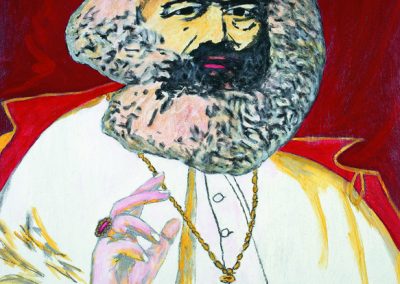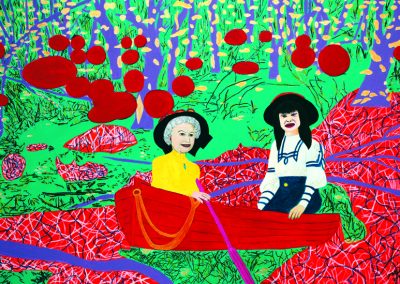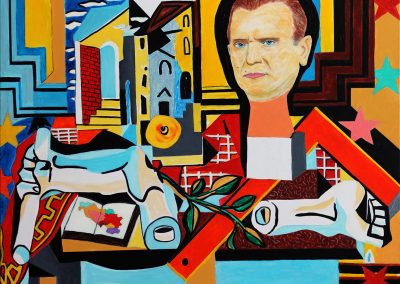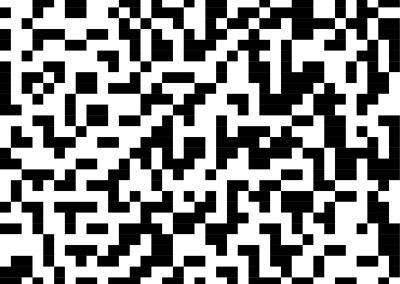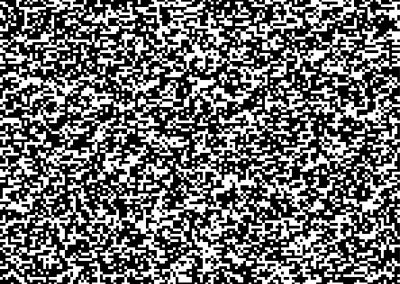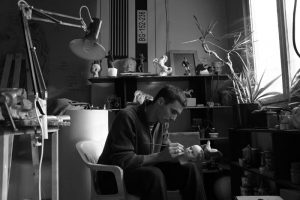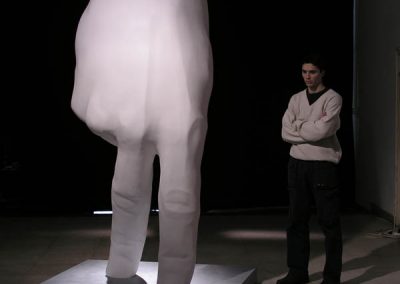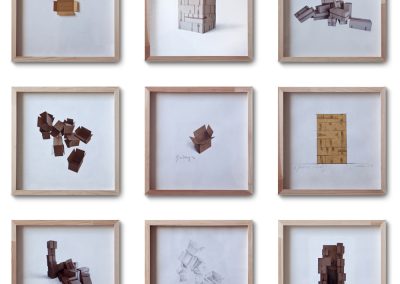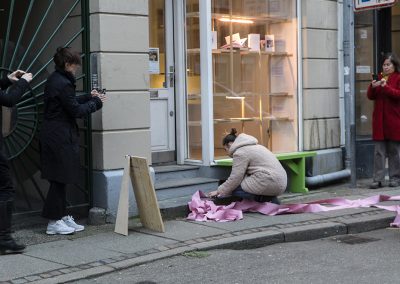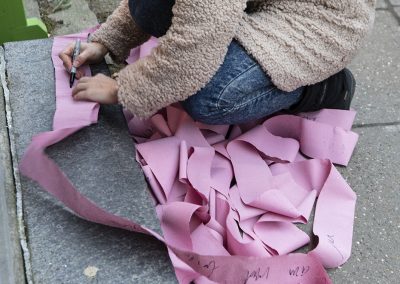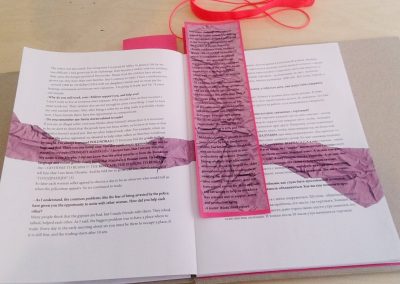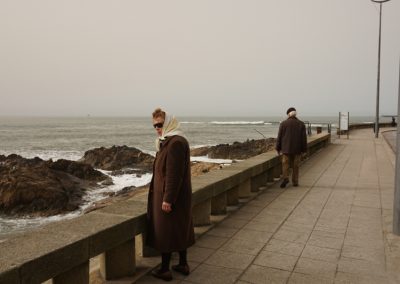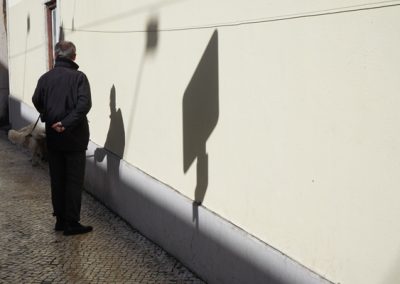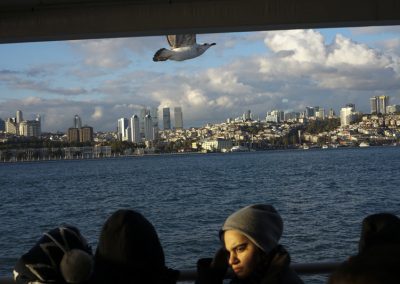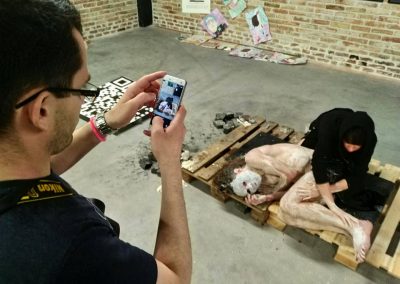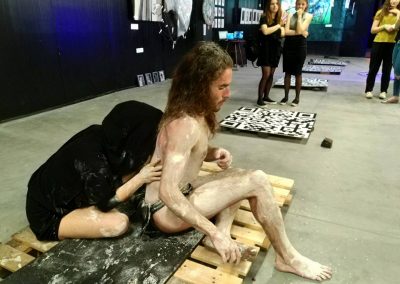Danube Dialogues 2018 present the authors from 10 Danube countries: Germany, Austria, Slovakia, Hungary, Croatia, Serbia, Romania, Bulgaria, Moldova, and Ukraine. In addition to the main programme, which focuses this year on four artistic dialogues between the Romanian and Serbian artists via individual exhibitions in some ten Novi Sad gallery spaces, the audience will be introduced to the artists whose concept of work is based on active contemplating on the man’s role in a contemporary society. Taking a glance into their studios we ask them to introduce us to their work that they are going to present in Novi Sad by the end of August:
GERMANY
Wolfgang Schmidt:
All my figures are similar, but never the same. Despite a very strong reduction, they all have their own lines, corners and edges. The restriction to the ever-recurring figures enables unlimited designing freedom: Human interaction is both the subject and rhythmic sequences or playing with the laws of mathematics.
Wolfgang Schmidt studied Object Design at FH Dortmund (graduated with Werner Nöfer & Pit Moog) focusing on art in public space. Since then, the main topic of all his following works has been serial processing of a figure. He has participated at national and international individual and group exhibitions since 1995. He started as an art assistant to Prof. HD Schrader in Hamburg, and later organised international exhibitions and competitions (1992–2000), worked as curator, artistic director for Kunstbox, and national biennial art fair in Dortmund (2009–15). Schmidt has been awarded several artistic prizes: Ennepe-Ruhr (2015), Dortmunder Grafik (2002), scholarship for drawing, Iserlohn (2003)…
AUSTRIA
Gerlinde Thuma:
My work is an attempt to grasp the dimension time – to feel the distance and the tension between two different moments while I am working on an object or painting – to find, define and form the relationship between two facts. By following the guiding current of repeating my work and myself again and again, it is possible to translate time into language and matter.
Gerlinde Thuma studied painting and film animation in Maria Lassnig’s master class at the University of Applied Art in Vienna. The principle of developing a continual temporal progression using a drawing that becomes a moving image in an animated film is something that Thuma has continued to develop in her double paintings. While film lets the images proceed one after the other, painting stops the passage of time. Before and after immanent in time are conserved in the process of painting and in the application of many glazed layers of colour one over another, and also in charcoal drawing, a medium the developmental process of which presupposes temporality.
SLOVAKIA
Olja Stefanovič Triaška:
Focus of my artwork is on the relationship between man and the space. I was always interested in dehumanized space, lonely, lost, and deprived of their basic functions. The aim of my visual research through the visual medium of photography is to open up and show what impact one of us has on space and what influence has space on us, how much space can manipulate with us and why we are feeling lonelly in the city and in society. Contemporary society, new technologies and social networks bring us a new definition of space, allow us to live an introverted life, and have our own space that we try to simulate the way we want and how we feel secure. I document space as a abandoned, lonely, neglected and only with a memory of its past glory. Each one photographed space had its own story and its own cultural – political context. For last five years, in my artwork, I focus on my personal history, on our relationship with the history, monuments and personal archive. My childhood’s stories and memories are playing main role in visual research and background for my book.
Olja Stefanovič Triaška (Novi Sad, 1978) PhD from the Academy of Fine Arts and Design at the Department of Photography and New Media in Bratislava/SK (2007). Teaches at the Department of Photography and New Media at the same academy. Finalist of Award 333 organised by National gallery in Prague, CZ (2010) and a photographer of the year in Slovakia in 2015. Awarded for project “New Bratislava” by special Bratislava grant and prize by the Mayor of Bratislava, within the Slovak Press Photo award (2017). She was presenting her work at many group and solo exhibitions in Slovakia and abroad. Her works are part of collection of city gallery in Nitra, Nitrianská gáleria.
Ján Skaličan:
My work is a sort of a statement, an attempt to articulate thought processes based on the consideration of a particular place and past in the attempt to restore the experience of the world to the impenetrability of material and memory. The theoretical starting point was the theory of eternal recurrence and the look at the cyclical repetition of the past in a uncertain presence. I tried to understand and the mediate it, however it is an endless, constantly repetitive process that needs to be further developed and materialized it for the the possibility of becoming more aware of the possibilities our standing in the event horizon – space and time at all.
Ján Skaličan (1989) was born in Bratislava, Slovakia. BA (2016) and MA (2018) degree in Photography and New Media at Academy of Fine Arts and Design in Bratislava, Bratislava, Slovakia. First prize in the Slovak Press Photo in the category Students and young photographers up to 25 years (2014). He is a co-founder and member of dsk. (art group with Ľuboš Kotlár, Iva Durkáčová) and co-founder, organizer and curator of Žumpa Gallery in Bratislava. He was presenting his work at exhibitions in Slovakia and other countries.
HUNGARY
drMáriás:
“War All the Time”
drMáriás (Béla Máriás) is a painter, novelist and musician. He studied at the University of Arts in Belgrade. Since 1991, he has lived and worked in Budapest. His multidisciplinary art is recognised as having strong and critical language deriving from Eastern Europe identity, historical and political context, while his visual language depicts the elements of avant-garde, dadaism, pop art, soc art, surrealism and many other styles. He uses well-known artistic contexts as reflections of the world of the ideal, beauty, peace and transcendence while the figures on his paintings are set in conflict with that world, showing in such a way the political, historical, and social reality reminding of painful and tragic experiences. Máriás defines his artistic activity as social surgery. He has had individual exhibitions in Budapest, London, Belgrade, New York, Prague, Peking, Vienna… His prose has been published in Hungary and China. As a frontman (singer, saxophone and trumpet player) of the Tudósok Band (The Scientists) he has played several hundreds of concerts from Moscow via Berlin, and Paris up to London and New York.
CROATIA
Gildo Bavčević:
In my artistic work I deal critically with contemporary society. With various forms of socially engaged art with an emphasis on social, political, and environmental problems as well as the transition of public space. Starting from my own point of view, I am questioning and provoking social anomalies as well as the position of a man-individual in the (un)perspectiveness of one time. The Plastic Man Machine was created during the Almissa Open Art Festival 2015. Mechanical blows with a head covered with plastic helmet used for protection at work in a rock located in the imposing landscape of the Cetina canyon, emphasise the cruel relationship of a small man (who becomes more and more like an obedient machine) compared to the great nature he defies, destroying it arrogantly being at the same time aware that he cannot survive without that same nature.
Gildo Bavčević was born in Split, in 1979. He got his master degree (2013) at the Department for Film and Media Art at the Academy of Arts in Split. He is a multimedia artist, author of performances, video performances, video installations, short films, sound design. In addition to four individual exhibitions he participates actively at numerous group exhibitions and festivals in the country and abroad such as Red Eu, Germany, Kunsthof Jena, Germany, Coexistence For A New Adriatic Koine, arTVision, Pino Pascali Foundation, 24th Soral Ose Art (Geneva), Mediterranean 16th Biennial of Young Artists of Europe and Mediterranean (Ancona), Video Dumbo Experimental Film Festival (New York) and many others. He was the finalist at the Radoslav Putar Prize competition, winner of the award at the 39th Split Salon for video Performance titled The Plastic Man Machine and first prize at the 46th Review of Croatian Film Creative Work for a documentary film titled Solidarity Network. Glido works as an assistant at the Academy of Arts in Split. He is a member of the Croatian Freelance Artists’ Association and Croatian Association of Fine Artists of Split.
Martina Grlić:
In a series of paintings titled Kolektivni snovi (Collective Dreams) I study the concept of ideology that can function as a set of values, false consciousness or as a source of conflict. Probably the most precise definition is the one laid down by the Marxist philosopher Althusser who said that ideology was an imaginary connection with real conditions of existence. I am interested in the phenomenon of collective identification and the reason because of which people are most easily identified by means of bad music, populist ideas, sports or religious events. At such a moment the communion functions ideologically and it may escalate in many undesired directions.
Martina Grlić was born in Zagreb, in 1982. She studied painting at the Academy of Fine Arts in Zagreb, in the class of Prof. Zlatko Keser and Prof. Duje Jurić. Since 2010, she has participated actively at Croatian art scene and exhibited at 11 individual and several group exhibitions in Croatia and abroad (Spain, France, Slovenia, China, Poland. etc.). Martina was awarded the Erste Bank First Prize for a young artist, New Fragments 8. (2012) and the Prize of Hrvatska Poštanska Banka for a young artist at the 4th Biennial of Painting in Zagreb (2017). She participated in the Glo’art residential programme in Belgium (2014). Martina is a member of the Croatian Association of Fine Artists (HDLU) and Croatian Freelance Artists’ Association (HZSU).
Vedran Perkov:
I used one of the most translated documents in the world: Universal Declaration of Human Rights. I turned the text into a binary code with “zero“ and “one“ as basic figures and after that I replaced them with black and white squares. The presentation of visual text changes rapidly, achieving in such a way the visual analogy similar to interferences on television (“snow“ or “white murmur“). This general image is used for the following “narrative“: the place of black squares is taken by photographic portraits. Visual “rhythm“ of the Universal Declaration of Human Rights is a picture of mankind that can be perceived through the media landscape, namely its protagonists: deliberate or incidental, known or unknown, committers of good deeds or crimes. Visual information are presented as excessive amount of data. Such progressive infection saturates the mental space and burdens an individual with heavy contents; the contents that, by the rule, cannot be processed. These are all potential passive aggressors who reach the recipient through various channels and attack his/her living space contaminating it.
Vedran Perkov was born in Split, in 1972. In 2002 he graduated painting from the Accademia di Belle Arti di Brera in Milan, in the class of Prof. Diego Esposito. He has been exhibiting since 1999 and he has participated at more than 60 group and 20 individual exhibitions in the country and abroad. Vedran has also participated at workshops and Artist-in-Residence programmes in Croatia, Italy, Sweden, Latvia, Algeria, France, Canada and USA. He was awarded Radoslav Putar Prize, great Split Salon Prize (2007) and the Third Prize at the HT – Croatian Contemporary Art Prize exhibition (2018). With Gorki Žuvel and Helena Petrinović he initiated the project titled “Premieres“ in Loggi of Otvoreno pučko učilište (Open Lifelong Learning University) in Split (2008). In co-operation with Božo Majstorović he designed the concept and initiated the project titled “Tuesdays in the Gallery/Fast Forward“ (2012), and together with Marin Viculin he launched the project titled “Punta Arta – Museum on the Island“ (2005) on the island of Zlarin. He also organised the Almissa Open Art Festival in Omiš (2016). His works can be found in the Art Gallery in Split and Museum of Contemporary Art of Istria in Pula while his sculpture Golf Emperor was set at Zlarin. Vedran works as an assistant professor at the Fine Arts Department of the Academy of Art in Split.
SERBIA
Davor Dukić
In his work Davor has always been inspired by the cult of the body, often putting it in an ironic context. His creative process is intuitive, guided by eternal themes and focused on pure visual forms, stripped of all superfluous. By using non-traditional and unconventional materials for the artistic medium of sculpture, he brings his spatial-plastic design to technical perfection. Dukić’s tactile sculptures, the the product of the careful observation of human anatomy and the human relationship to the body in different contexts. The dialectical connection between form and meaning has been successfully materialized through realistic sculptural objects. Creating his own world of ideas and inspiration, Dukić uses different materials, such as polystyrene, acrylic and metal, realizing his work in different dimensions. His autonomous, often monumental sculptural forms confidently conquer space. (Anđela Rokvić, art historian)
Davor Dukić was born in 1979 in Karlovac, Croatia. He has a PhD of Art in Sculpture. Lives and works in Belgrade.
BULGARIA
Alexander Valchev:
I accept sculpture as my creed. For me it is the most complex, comprehensive and hardest about making art. It can be seen in all my activities, I perceive the world through that principle regardless of what I do and with what kind of medium I express myself as an artist. Sometimes my sculptures are abstract and the main things that interest me are the search itself, empathy process of establishing and studying the shapes and spatial relationships. Other times, however, my works are socially responsible and with them I make metaphorical comments on what is happening around us. In any case, I believe that sculpture, is always here, all around us in the three-dimensional world, to provide a new meaning and new life of reality.
Alexander Valchev completed his master studies of sculpture (1998) at the National Academy of Arts and master studies of photography (2013) at the New Bulgarian University, both in Sofia. He has won several art prizes for his work: Born Independent – 100 Years of Independent Bulgaria (2009), PHODAR 5th Photographic Biennial Pleven, Bulgaria (2007); UBA’s Award for Young Artist at the National Sculpture Exhibition (2000); First Prize for Young Artist at the 7th “Fare Arte in Sardegna in Cagliari, Italy (1995)… Artist in Residence Cite Internationale des Arts in Paris, France (2003) and at CCN Graz (2007). He has exhibited his works at many individual and group exhibitions in Bulgaria, Austria, Germany, Italy, and Slovenia. Alexander lives and works in Sofia.
MOLDOVA
Tatiana Fiodorova:
In search of my identity and facts determining my future I have turned to the older generation of Moldovan women, many of whom are already retired. The focus of attention is my mother who has worked as a saleswoman at a flea market for the last ten years. The book ‘Only I know how we survived’ presents drawings made on toilet paper, an interview with my mother, and small stories from the sellers at the flea market, which is located near the Chisinau railway station. For two years, 2016-2017 I have documented and observed the life of this place. In the summer of 2017 the flea market was closed by the authorities of the city of Chisinau. Portraits and stories of women tell of the difficult everyday life of the aging Moldovan women and help to rethink the Soviet past and present Moldovan today. What is a woman’s future for the country of Moldova?
Tatiana Fiodorova is a Moldavian artist, curator and educator working with current political and social themes, often evaluated in contextual relation to the history of the Soviet Union. This results in works of installation, live performance, public art, video and artists’ books.
UKRAINE
Igor Chekatchkov:
My interest in photography came from the need to document post-soviet reality around me, which I concealed in my documentary work. At the same time, in my artistic practice, I worked in the nude genre enquiring about the body and human presence. Now I focus on the body as a target for a political subjection, exploring the boundaries between public and intimate space. My process is determined by questions pertaining to my perception of visual language: Where do private space end and the common one begin? Is there a marked edge between these two elements? And finally, how to expand the usual field of photography?
Igor Chakachkov started as a photojournalist/press photographer in 2008 and as of then he has covered a wide range of cultural, mass and sports events. Since 2013 the author has been dealing with art photography which he still explores these days. The boundaries between public and intimate space are his main focus today. His works have been published in Forbes, National Geographic, The Guardian, Le Monde, and others. He also continues to exhibit his prints internationally at both individual and group exhibitions, including the works at the “La Quitreme Image“ in Paris (2014), in the “Claude Samuel“ Gallery in Paris (2015), Ukrainian Museum in New York (2015), Ukrainian Cultural Center in Los Angeles (2015), at Batumi Festival in Odessa (2017) and many others. Igor is a member of UPHA (Ukrainian Photographic Alternative) and National Society of Photo Artists of Ukraine.
Andrey Utenkow:
What is reality? Is it what we feel, when we interact with the “outer” world or is it the outer world itself? Trees, the ground, the sea, the mountains, the sky – everything is there, even when we don’t look at it. Are the things from the immaterial world also real even if we can’t see or touch them? Of cause, they are! For example our memories or the magic world, a child have built out of sticks and stones. Also real are the hallucinations, that people with mental disorders or those under drug influence have. Nobody can convince them, that the dragons, huge spiders and snakes that are hunting them, don’t exist. For these people, hallucinations are absolutely real – having texture, smell and the finest detailisation…
Andrey Utenkow (Ukraine, 1987) Freelance artist, organizer of contemporary art exhibitions, creator of concepts, logistics, PR. Organizer and participant of performances and performance workshops with teachers from Europe in Ukraine. Worked as dolphin therapist and clinical psychologist in dolphinarium “Nemo”, Odessa and as dolphin therapist for children with special needs (2012-2018). Since 2014 he is a leader and teacher in Playback Theatre “Kak Doma”, ”OS”. The same year he also became participant of performance-project Singul.AR (augmented reality).


